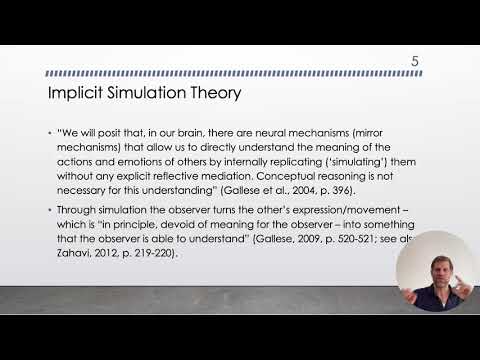 Speaker: Paul Sopcak @Paul
Speaker: Paul Sopcak @Paul
 Affiliation: MacEwan University
Affiliation: MacEwan University
Title: Creative Writing as a Community-Creating Act?
Abstract (long version below): This symposium explores the transformative potential of creative writing in fostering empathy, self-understanding, and social cognition. Diverse approaches will be presented, including: phenomenological perspectives on intersubjectivity and empathy; the emotional and psychological benefits of poetic autoethnography; and comparisons between the effects of literary reading and creative writing on empathy. The presentations investigate how literary writing practices can promote personal growth, deepen emotional clarity, and enable individuals to vividly simulate others’ perspectives. Together, these presentations aim to highlight creative writing’s power in bridging individual experiences, enhancing emotional insight, and fostering greater interpersonal understanding and connection.

 Long abstract
Long abstract
Despite the recent surge of second-person accounts (“you turn”), simulation theory remains the reigning paradigm to explain intersubjectivity, empathy, and social cognition. In general, simulation theorists agree that we gain an understanding of others’ mental states by either implicitly (resonance mechanisms; “mirror neurons”) or explicitly (cognitive perspective taking) pretending to be in their mental shoes in response to perceived bodily expressions, and then project the resulting mental state(s) back onto the other. Practicing this form of social simulation through, for instance, creative writing, would then potentially expand our empathic boundaries and enhance our social cognition.
An explicit aim of this symposium is to “examine the potential of creative writing practices to help individuals more vividly simulate others’ perspectives [to ultimately] promote greater empathy and understanding” (de Seta & Hakemulder).
In the proposed presentation, I offer a phenomenological alternative to simulation theory-based accounts of creative writing’s potential impact on empathy. According to Husserl (1973), intersubjectivity and empathy are primordially based on a “community creating act that in Latin is simply called communicatio,” which is a an “intention and will to intimate” and a “specific act … of communicating oneself” (p. 473; second emphasis mine, trans. Zahavi, 2019). Importantly, the creation of such “we-experiences” also involves a form of self-alienation and change in self-understanding through experiencing oneself from an outside perspective (Zahavi, 2019). Although Husserl and many phenomenologists after him (e.g., Sartre, Stein, Zahavi) place the face-to-face encounter at the heart of this theory of intersubjectivity and experienced community, I argue that it provides a nuanced and sophisticated model for explaining creative writing’s potential to expand empathic understanding.
References
Husserl, E. (1973). Zur Phänomenologie der Intersubjektivität III. Texte aus dem Nachlass. Dritter Teil. 1929–1935, Husserliana 15, ed. I. Kern. Martinus Nijhoff, Den Haag.
Zahavi, D. (2019). Second-Person Engagement, Self-Alienation, and Group-Identification. Topoi, 38(1), 251–260. Second-Person Engagement, Self-Alienation, and Group-Identification | Topoi

